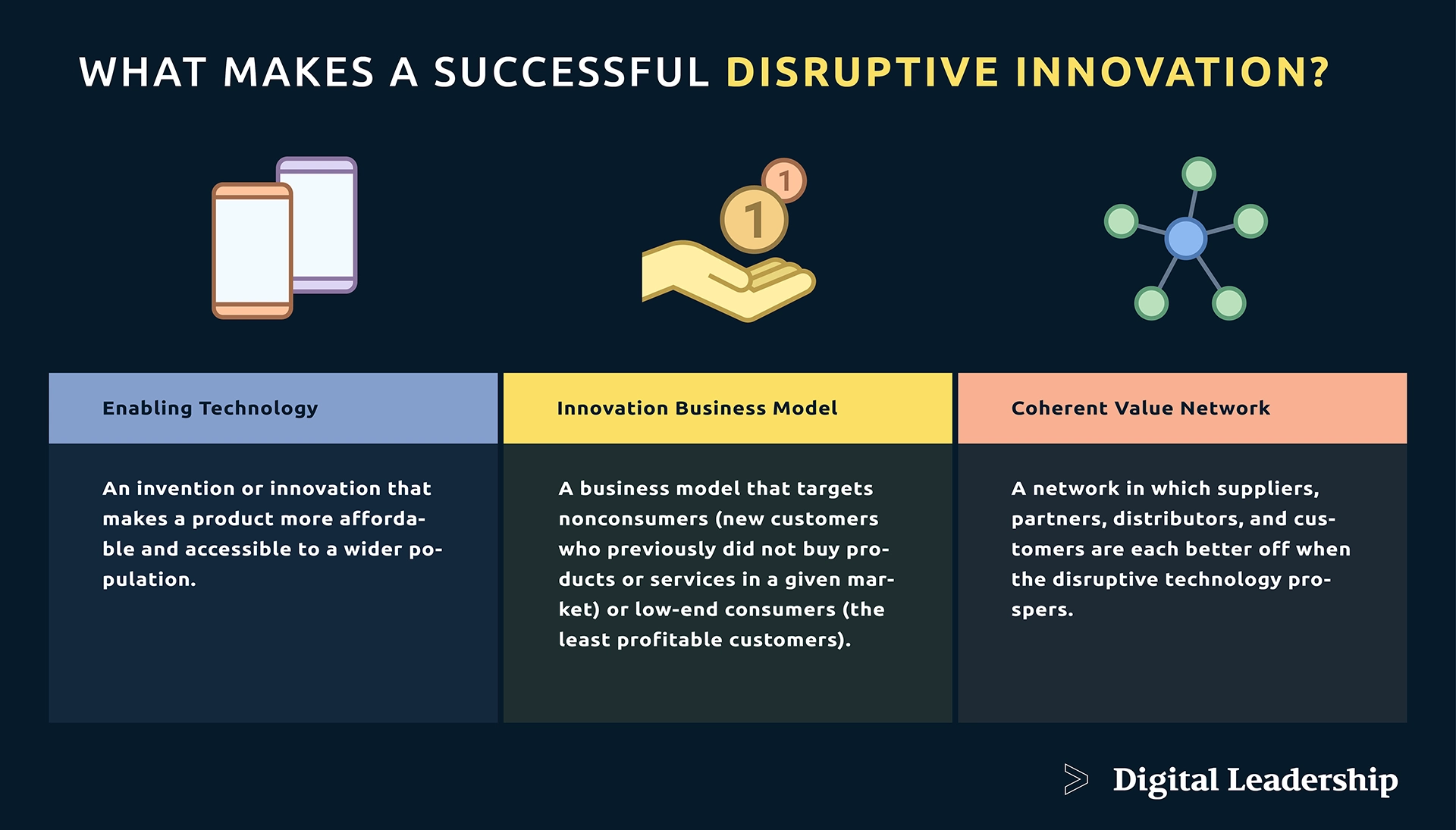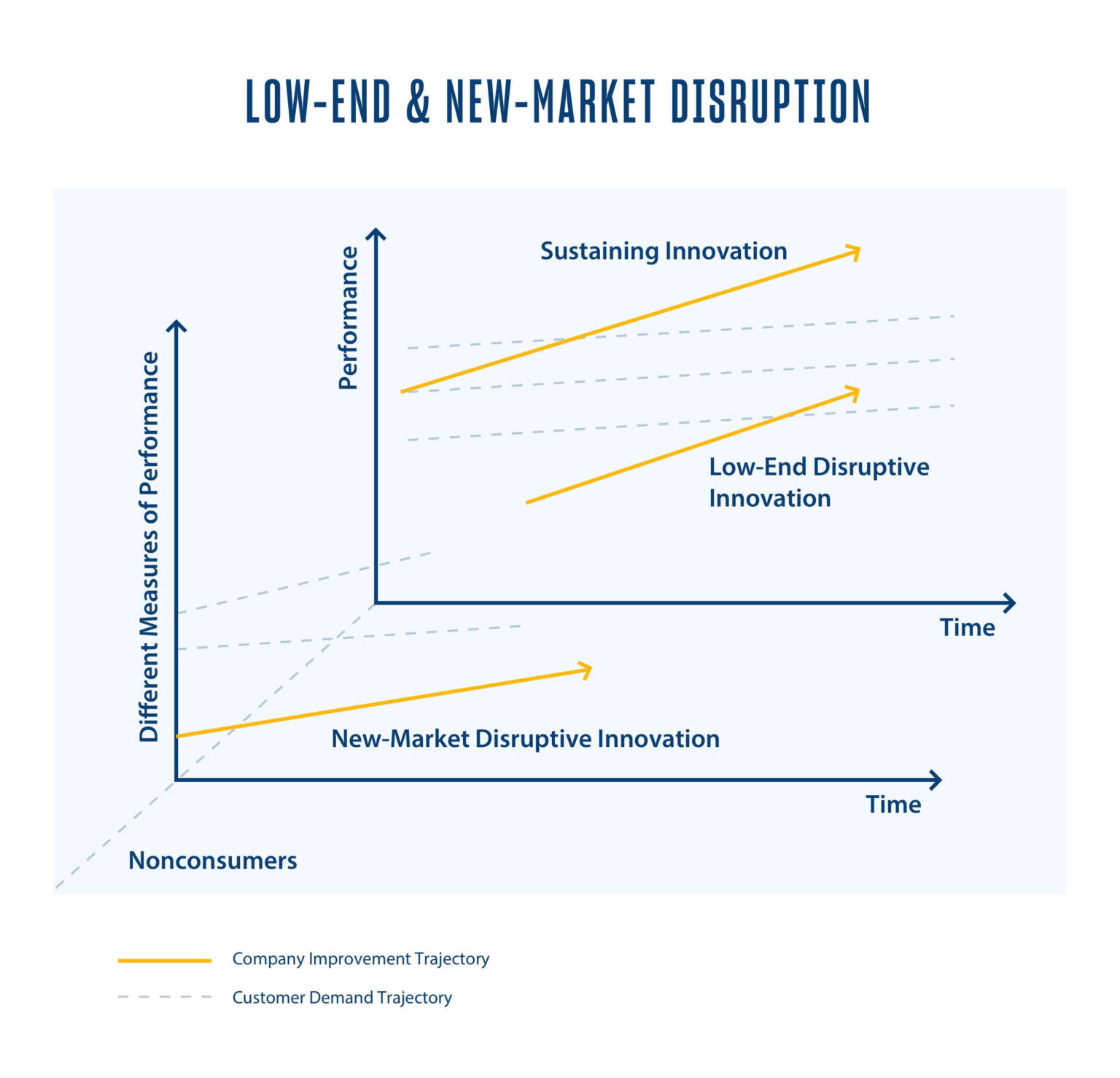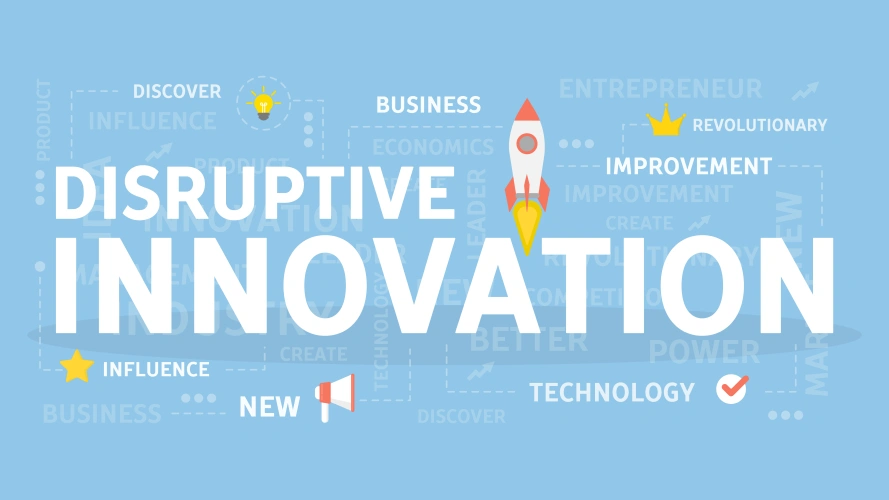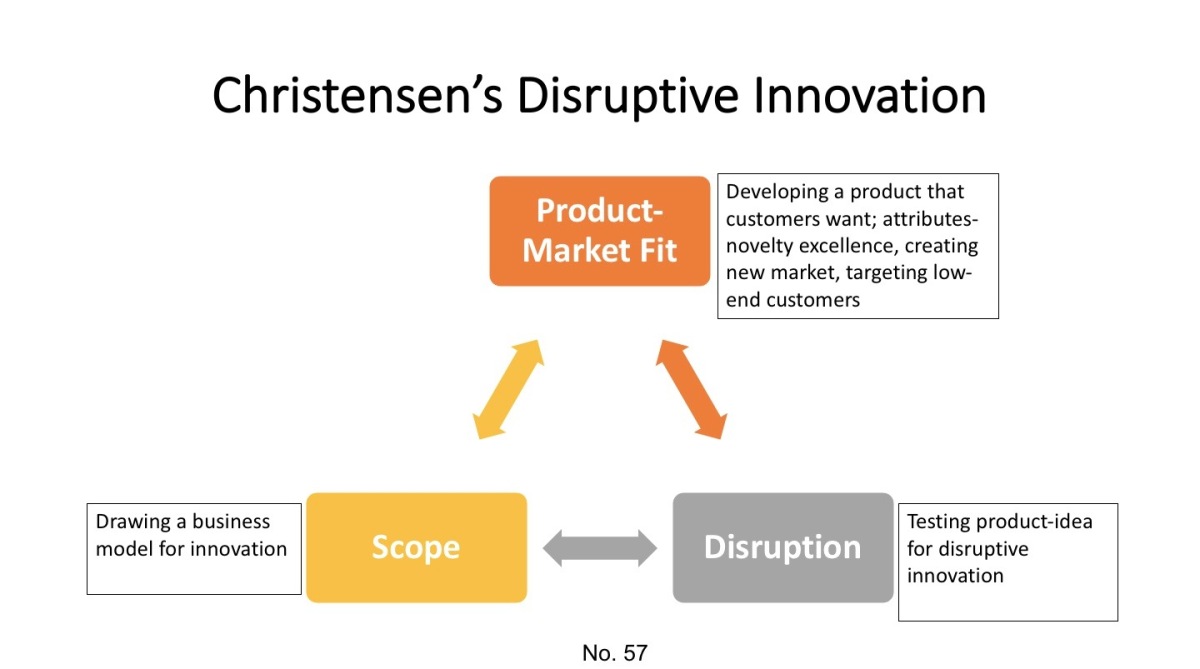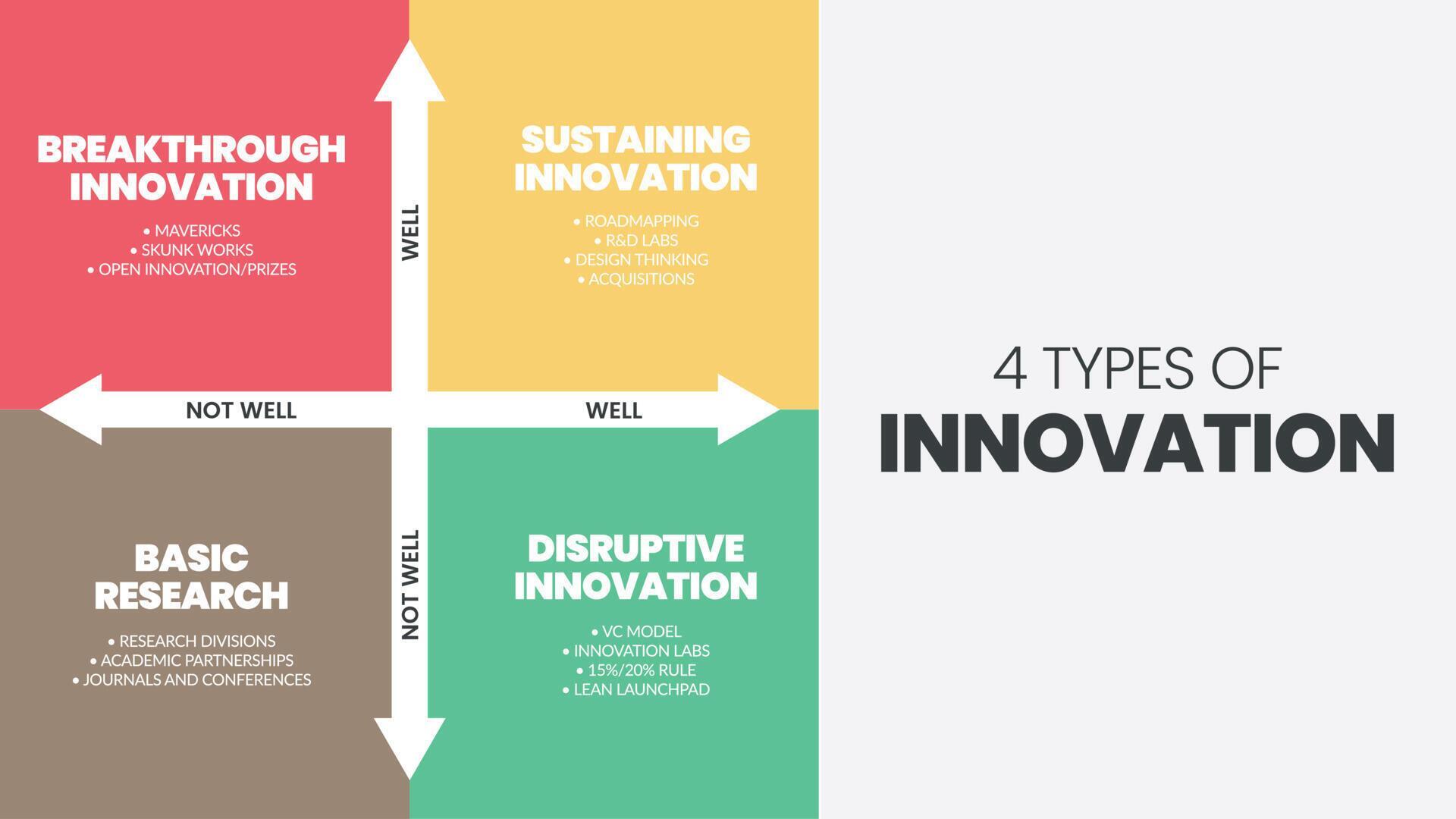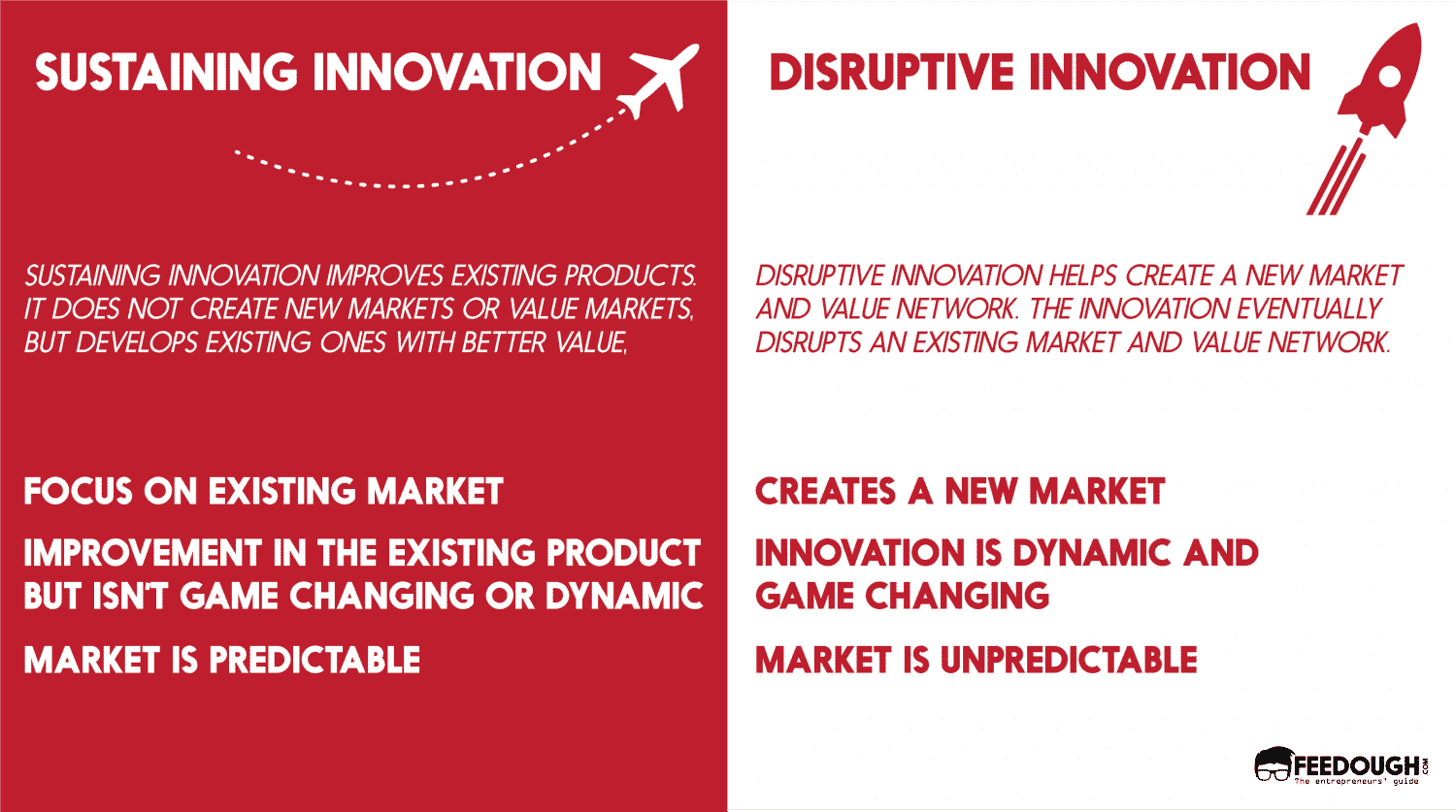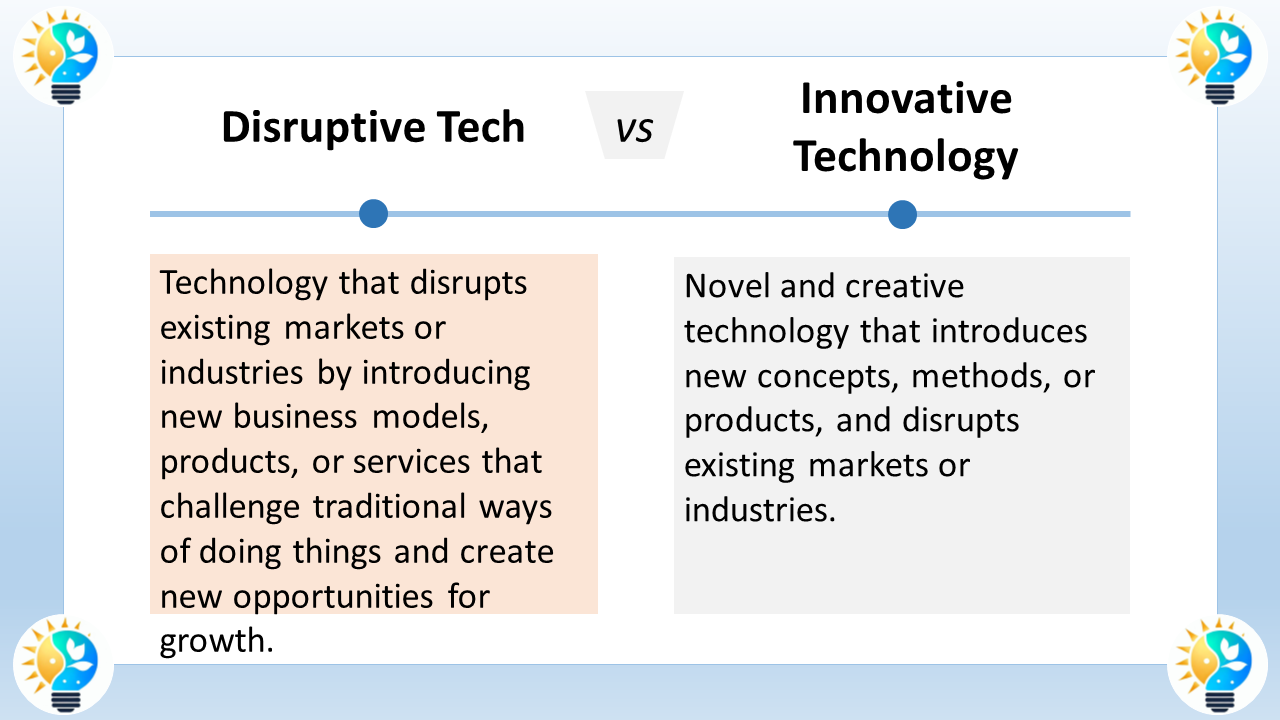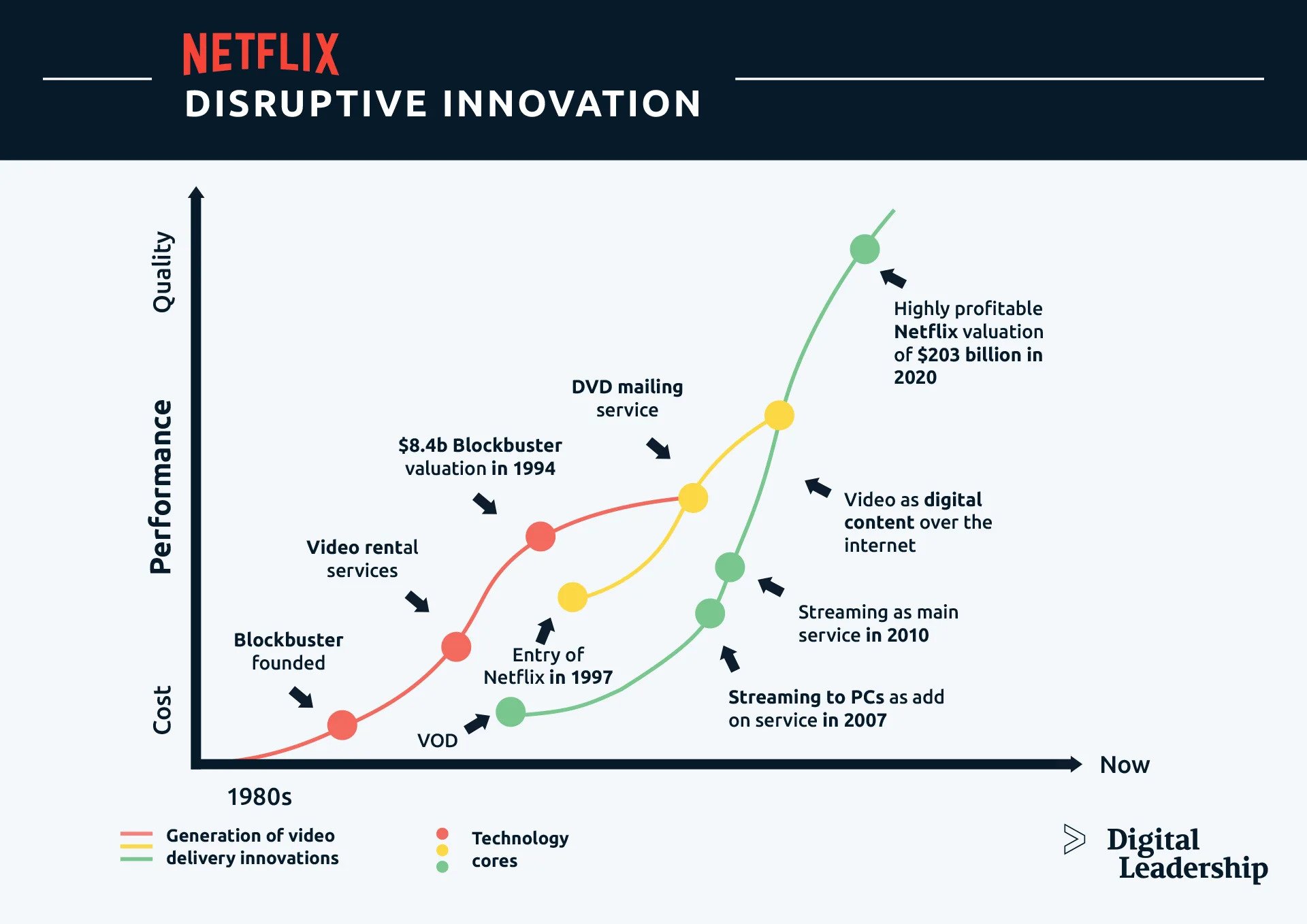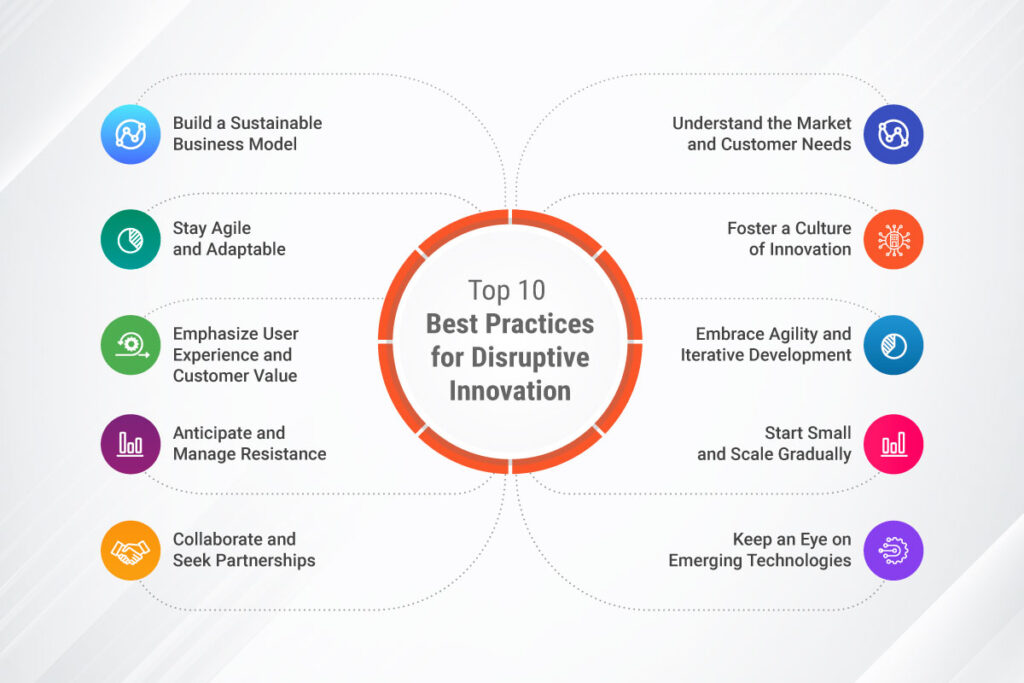Which Of The Following Statements About Disruptive Innovation Is True

In boardrooms and classrooms alike, the term "disruptive innovation" is ubiquitous. But how well do we truly understand this concept, and what assumptions are guiding strategic decisions based on it? Misinterpretations of disruptive innovation can lead to misguided investments, ineffective strategies, and ultimately, missed opportunities in a rapidly evolving market.
The following article seeks to clarify the core principles of disruptive innovation, addressing common misconceptions and examining which statements about it hold true. We'll delve into the theory's origins, its key components, and its practical application, relying on the work of Clayton Christensen, the Harvard Business School professor who originally coined the term, and insights from subsequent research and analysis.
Defining Disruptive Innovation
Disruptive innovation, at its heart, describes a process by which a smaller company with fewer resources is able to successfully challenge established incumbent businesses. Specifically, it targets overlooked customer segments or creates entirely new markets. This is achieved by initially providing simpler, more convenient, often lower-cost products or services.
Crucially, these disruptive innovations don't initially appeal to the mainstream customers of incumbents. They are often considered inferior by the dominant players in the market. However, as the disruptor improves its offerings, it eventually encroaches upon the incumbent's customer base and ultimately displaces the established leaders.
Common Misconceptions
One of the biggest mistakes is equating any innovation that is simply new or innovative with being disruptive. Not all innovation is disruptive. Sustaining innovations improve existing products or services for existing customers, catering to high-end or demanding clients seeking incremental improvements.
Another misunderstanding is thinking that disruption happens quickly. It's often a gradual process, taking years or even decades for a disruptive innovation to fully mature and overtake the incumbents. Many confuse it with breakthrough technologies.
Thinking that disruptive innovations always offer lower prices is a further error. While they often begin with a lower price point, the key is offering a different value proposition, which might include greater convenience, accessibility, or simplicity. Sometimes disruption doesn't even involve low prices.
Which Statements Hold True?
Disruption originates in low-end or new-market footholds. This is a core principle. Disruptors gain traction by targeting segments that incumbents are not serving well or at all.
Disruption is a process, not a product or service. It's about the entire journey of value creation and competitive displacement. It is not defined by a single invention.
Incumbents focus on sustaining innovations. Because they are driven by existing customers, large companies naturally prioritize innovations that improve existing products for established markets. The innovators dilemma states that focusing on their existing market can ultimately lead to their downfall.
The Role of Technology
Technology plays a crucial role in enabling disruptive innovation, but it's not the only factor. Technological advancements can create opportunities for disruptors to offer new solutions or reach underserved markets.
However, it’s the business model, not just the technology itself, that drives the disruption. Successful disruptors often combine technology with innovative business models that change the economics of an industry.
Consider Netflix. Their initial disruption wasn't simply about streaming technology. It was about a subscription-based model that bypassed traditional movie rental stores and offered greater convenience to consumers.
Disruptive Innovation vs. Sustaining Innovation
The distinction between disruptive and sustaining innovation is critical. Sustaining innovations maintain or improve existing market positions, while disruptive innovations create new ones.
Established companies are generally good at sustaining innovations, but often struggle with disruptive innovations. This is because disruptive innovations often require different organizational structures, processes, and cultures than sustaining innovations.
Amazon, initially a disrupter in the book retail industry, now also engages in significant sustaining innovation, constantly improving its existing services and offerings.
The Importance of Context
The principles of disruptive innovation are context-dependent. What is disruptive in one industry may not be disruptive in another.
The specific factors that contribute to disruption vary depending on the industry, the technology, and the competitive landscape. Understanding the context is crucial for identifying and responding to disruptive threats.
For example, the rise of electric vehicles (EVs) represents a potential disruption to the traditional automotive industry. However, the extent and pace of this disruption will depend on factors such as battery technology, charging infrastructure, and government regulations.
Looking Ahead
Disruptive innovation will continue to be a major force in shaping the business landscape. Companies that understand the principles of disruptive innovation are better positioned to identify threats and opportunities, and to develop strategies that will enable them to thrive in a rapidly changing world.
Understanding the nuanced aspects of disruptive innovation is crucial for businesses. It's a valuable tool for identifying potential threats and strategically adapting to industry changes.
Ultimately, the most valuable statement about disruptive innovation is that it is a continuous and evolving process that requires ongoing analysis, adaptation, and a willingness to challenge conventional wisdom. The future belongs to those who can embrace disruption and turn it into opportunity.
